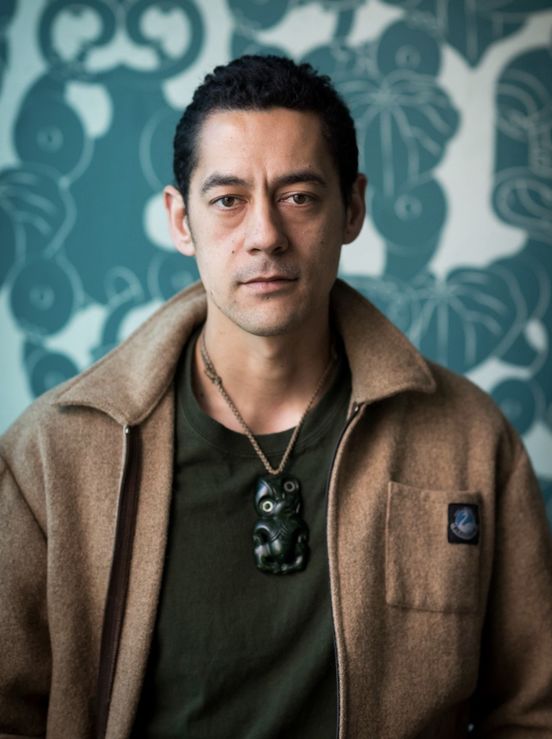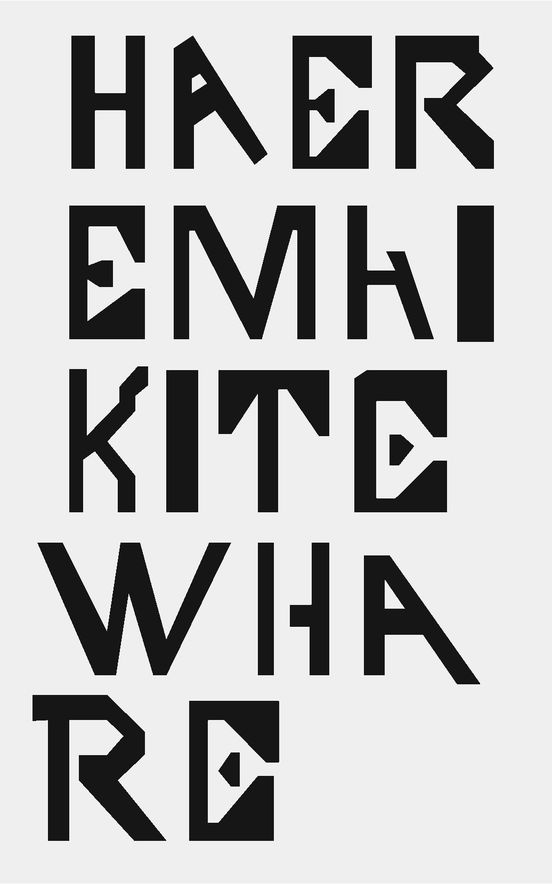During TDC68: The World's Best Typography, Johnson Witehira will present research gathered over the last 10 years into Māori lettering and typography.
Witehira will introduce new terminology he has developed to describe the different types of Māori lettering, Kupu Whakairo (carved text), Kupu Waituhi (painted lettering), Kupu Whatu (woven lettering) and Kupu Tātangata (tattooed lettering) and share several unique examples of Māori lettering and type.
This presentation will close with an exciting look to the future, as Witehira shares working outcomes of a Māori typeface being developed by IDIA and Klim Type Foundry. This work is the outcome of a collaboration between Witehira and Kris Sowersby of Klim Type Foundry, who are generously sponsoring TDC68.
Register to join us for this free lecture. Spaces are limited.
—
Johnson Witehira (Tamahaki, Ngāti Hinekura, Ngāpuhi, Ngāi Tū-teauru) is recognised as an expert on traditional and contemporary Māori art and design. Working between western design, contemporary art, and Toi Māori (Māori visual arts), Witehira's research explores how a Māori world-view and Māori narratives can be used to shape all aspects of art and design in Aotearoa New Zealand.
Witehira’s artworks have featured in significant galleries both locally and internationally. In 2015, the Talente Munich Art and Design Fair displayed his Land of Tara series. While in 2012 new works from Witehira’s Ko Aotearoa Tēnei (2012) series were exhibited across 34 screens in Times Square, New York in the first-ever synchronised display of digital content. In 2016 ObjectSpace, New Zealand's most prestigious design and craft gallery, presented Half-blood, Witehira's second solo exhibition. This work was shown again recently in the Wellington City Gallery as part of the group show, Every Artist (2021). Following this, Witehira participated in Indigenous Aotearoa: Virtual Histories, Augmented Futures (Urban Shaman Gallery, 2017). He then co-led The Space Between Us, an indigenous artists' residency held at the Banff Centre for Arts and Creativity (Banff, Canada).
As a designer, Witehira’s goal is to bring Māori culture into all aspects of Aotearoa New Zealand. Witehira has worked across a broad range of design disciplines and with a range of communities, from large Government and councils to smaller Māori tribal groups. He has led the development of Māori design for some of New Zealand's largest organisations including, The Auckland City Council, TVNZ (Television New Zealand), The Auckland International Airport and NZTA (The New Zealand Transport Authority). Smaller personal projects include developing the first set of Māori alphabet blocks and gardening tools for children and the first functional Māori-specific typeface face. In 2017 Witehira co-founded Indigenous Design and Innovation Aotearoa (IDIA), an organisation that is focused on designing futures through an indigenous lens. As IDIA and the need for more indigenous designers grew, Witehira then went on to establish Āpōpō, Wellington’s first and only Indigenous Creativetech hub.
As an academic, Witehira's focus has been on decolonised approaches to teaching art and design. He has presented this topic throughout New Zealand and internationally (Hong Kong, 2016, Germany, Munich, 2015, Canada, 2017). Several world-leading design journals, books and magazines including Visible Language (University of Cincinnati, 2019), The Graphic Design Reader (Bloomsbury, 2019) and Novum (Munich, 2017) have also published Witehira's research. His typographic work has also featured on AIGA's Eye on Design.
—
The Ockham Lecture series is an annual programme of lectures and panel discussions across different themes that critically engage with craft, design and architecture. This programme is supported by Objectspace's Lead Partner Ockham Residential.

Portrait of Johnson Witehira

Detail of kupu waituhi (hand-painted lettering) on wharenui, Hikurangi (Witehira, 2018)


